Hello everyone.
It's so hot that I feel like melting, but the great thing about the ukulele is that you can play it easily under the sun or indoors with the air conditioner on. After you have become more of a ukulele player, you may have heard some sort of weird magical spell when people say “High G” and “Low G” at least once. Let's learn together what they are!
Summary
For those of you who are too hot to read to the end, here is a brief summary.
- High G: The 4th string that is strung is G4.
- Low G: The G3 string is an octave lower than the standard 4-string and is useful for solo playing and other situations where a lower range is needed! However, the Low G string is thicker than the standard High G string, so you need to check first whether you can apply it without whittling down the nut and a bridge. Also, you need to be aware that you might feel weird when using a low G string with a different material than the other 1st to 3rd strings. There are also some low G strings (such as wound strings) that are a bit thinner, which are also an option.
*Whichever strings you choose, be sure to select ones that match the size of your ukulele (soprano, concert, tenor).
For those of you who are kind enough to read this article through to the end, I'll try my best to write a few more details.
What are High G and Low G?
High G and Low G are strings that are placed on the fourth string of a ukulele (the top string when held by a right-handed player), and they differ in that they are placed one octave higher or lower. The standard string on a ukulele is the High G (G4), and the Low G (G3) is usually used when you want to play a solo but can't play this low on a ukulele. However, many people buy tenor ukuleles (larger size ukuleles) for solo playing, so tenor ukuleles may be originally strung with a Low G.
When you put Low G on your ukulele, you only need to replace the 4th string, but if you feel that the balance with the 1st~3rd strings is not good, you may want to replace all the strings.
Advantages of Low G
① Play more songs when playing solo!
The biggest advantage of using the low G string is that it expands the range of the sound and allows you to play more songs as a soloist. Especially in recent pop music, there are many busy songs that range from very low notes to very high notes! Why don't you try playing songs you couldn't play on the ukulele before by putting a Low G on?
② The thickness of the bass note will increase!
As a bass-lover, this is a point that personally makes me smile. Even if you are not a soloist, playing with strings one octave lower makes the bass sound thicker, and the deeper and warmer tone is perfect for ballads!
③ The bass sound becomes clearer, perfect for storytelling.
It is said that it is easier to sing if you can hear the bass! If you mainly play and sing, this is a great option!
Points to Note When Selecting Low G Strings
There are different types of Low G, but they all have one thing in common: they are thicker than High G. Therefore, you need to pay attention to the following two points.
① Is it possible to put the strings on without trimming the bridge or nut of your ukulele?
→ If the string is too thick, it may not fit into the groove for stringing.
*Check the gauge (thickness) of the strings!
② Does it feel comfortable to play?
*Bridge: The dark brown wooden part that holds the strings (photo: Playtech/ PUK350C Concert Koa) ↓
If the strings are too thick, they might not fit through the strings in the first place.
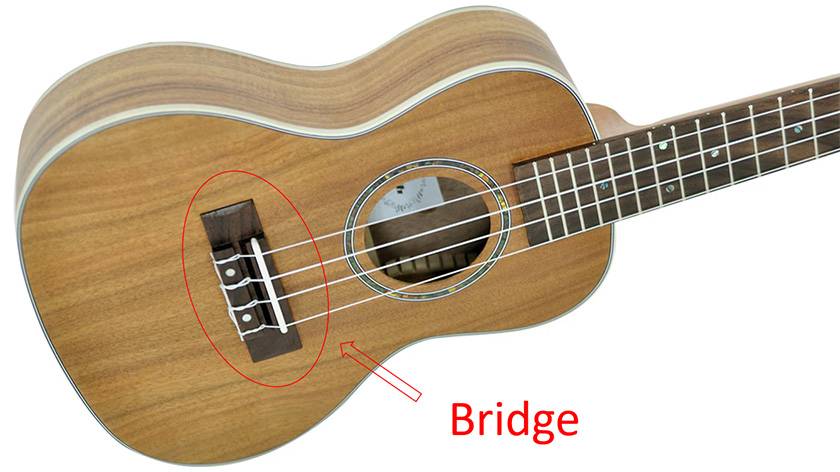
*Nut: the white part where the strings sit (photo: Playtech/ PUK350C Concert Koa) ↓
If the string is too thick, it may not fit in the groove where the string is placed...
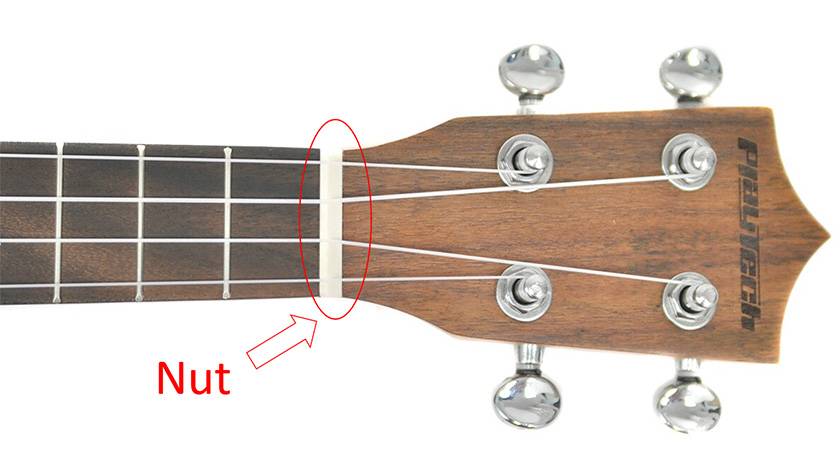
Types of Low G
There are two main types of Low G strings: wound strings and plain strings. I have listed these products as an example, but there are many more, so please check them out!
■ Wound Strings
Wound Strings are wound by metal (mainly silver).
〇 They are thin (a little thicker than normal strings).
→ Often can be strung without adjusting the groove of the nut or bridge.
*They may not fit on ukuleles with grooves cut perfectly to match the original strings.
× Some ukuleles have a metallic sound depending on how you play.
→ I've heard that there is sometimes a metallic sound because of the metal wounds on the strings, but I personally have never been bothered by it.
□ Wound Strings of Low G (Set)
Ernie Ball / Concert/Tenor Wound Low G Nylon Ball End Ukulele Strings - C
- For concert/tenor ukulele
- Set for a low G wound string (4 strings) and a nylon string (1-3 strings).
- The ball ends (round stoppers attached to the ends of the strings) make it easy to change the strings.
Ernie Ball / Concert/Tenor Wound Low G Nylon Ball End Ukulele Strings - B
This set is made of black nylon strings while the above set is made of clear nylon strings. Nylon strings have different tones depending on their color, so why not try and compare them?
Aquila / AQ-CLW Ukulele Strings
A set of a Low G wound string (4 strings) and Nile gut strings (1-3 strings).
I personally like the warm sound of Nile gut strings the best.
□ Low G Wound Strings (Single String)
■ Plain strings (Made of Fluorocarbon)
Low G strings made of fluorocarbon are also available. Fluorocarbon is the same material as fishing line and is characterized by its hardness, resistance to stretching, and thinness. Therefore, it is easy to hold and to produce volume.
〇 If you use fluorocarbon strings for the strings 1-3 as well, you will not have the problem of the 4th string sounding left out because they are made of the same material.
× The 4th string becomes very thick.
→ The bridge and the nut groove need to be adjusted.
□ Low G Plain Strings (Set)
- Set of fluorocarbon strings including Low G strings
- For soprano/concert ukulele
- Light Gauge
Set of clear fluorocarbon strings including Low G
- Clear fluorocarbon strings with a gentle tone.
- Suitable for soprano, concert and tenor.
□ Low G Plain Strings (Single Item)
What did you think? Please try to use a Low G and High G depending on your music and playing style. By the way, I have a tenor ukulele with a low G and a concert ukulele with a High G! Maybe you might consider having two ukuleles for each purpose?





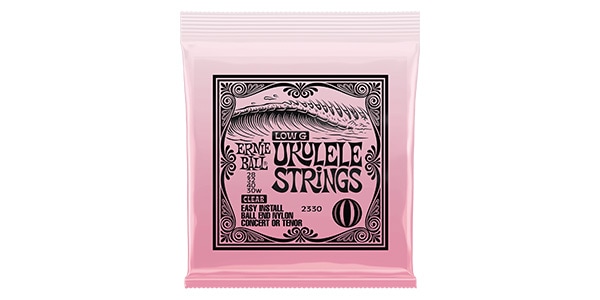
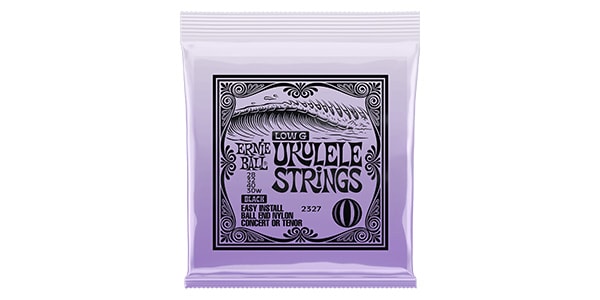


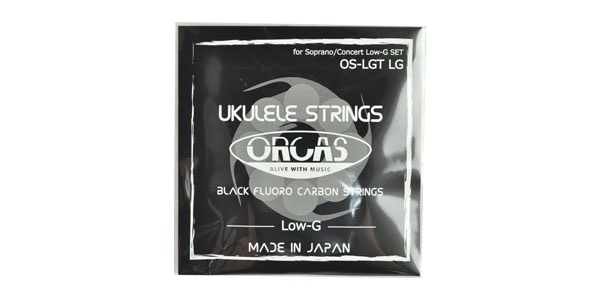
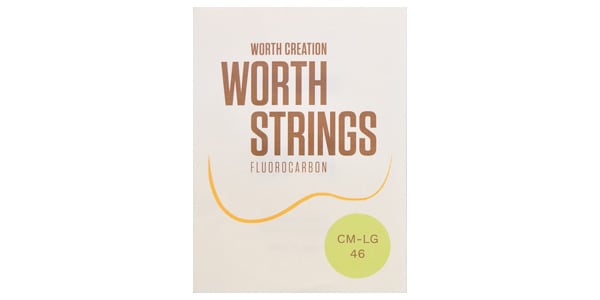
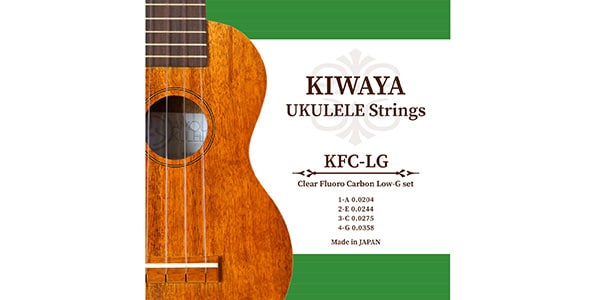
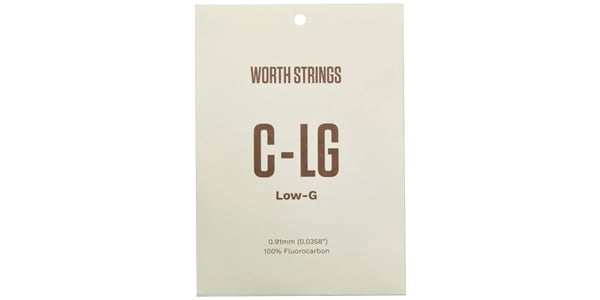









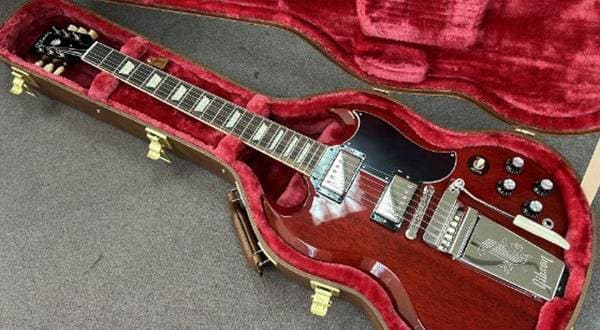
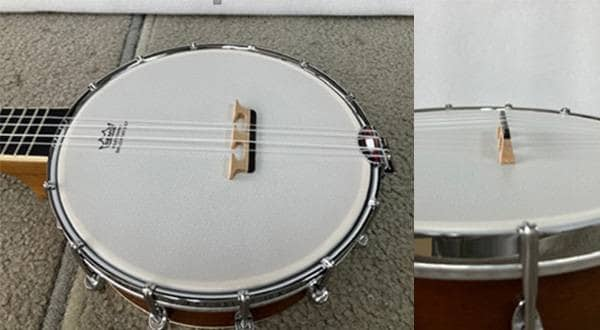
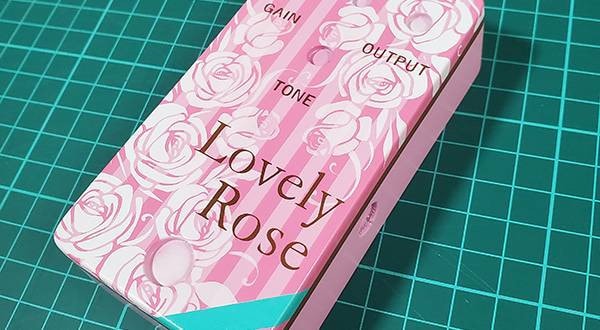
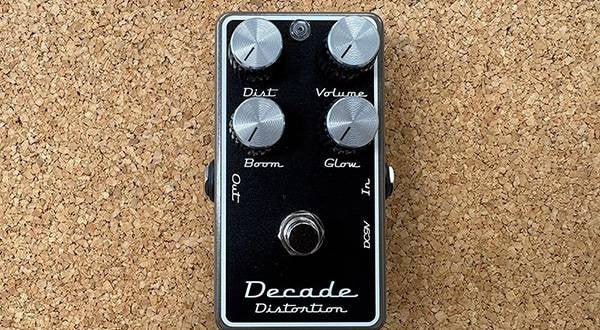
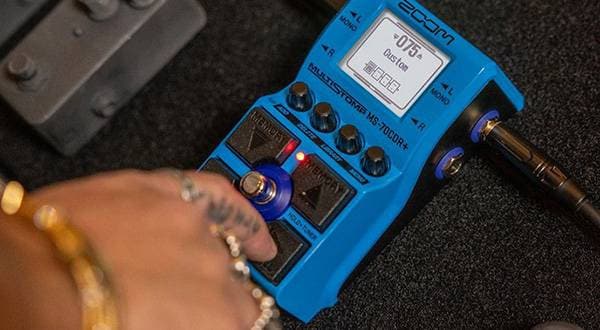
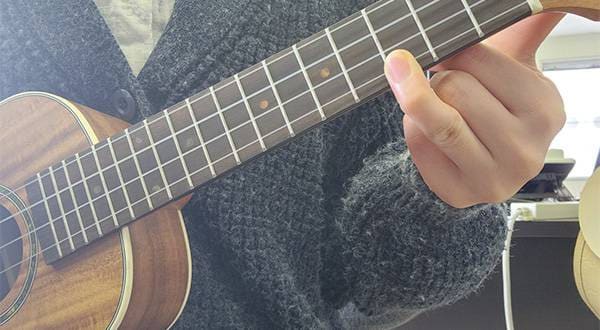
![[Enjoy the Ukulele Even More!] Mastering Muting Takes Beginners to the Next Step!](/contents/uploads/thumbs/5/2022/4/20220423_5_17663_1.jpg)
![[Enjoy the Ukulele Even More!] Who Is Suited for the Ukulele?](/contents/uploads/thumbs/5/2022/4/20220419_5_17569_1.jpg)
![[Enjoy the Ukulele Even More!] Bad habits that Often Happen in Beginner to Intermediate Ukulele Players](/contents/uploads/thumbs/5/2022/4/20220418_5_17527_1.jpg)
![[Enjoy the Ukulele Even More!] 4 Easy Guitar Chords for Beginners and How to Switch Between Them](/contents/uploads/thumbs/5/2021/12/20211210_5_15548_1.jpg)

 岩手県宮古市 起こせ!ウクレレムーブメント
岩手県宮古市 起こせ!ウクレレムーブメント
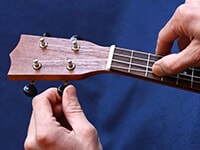 ウクレレのチューニング方法
ウクレレのチューニング方法
 初心者必見!PLAYTECH 激スゴの理由!
初心者必見!PLAYTECH 激スゴの理由!
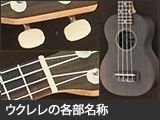 ウクレレの各部名称
ウクレレの各部名称
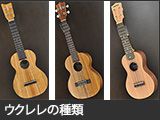 ウクレレの種類
ウクレレの種類
 ウクレレスタートガイド
ウクレレスタートガイド















